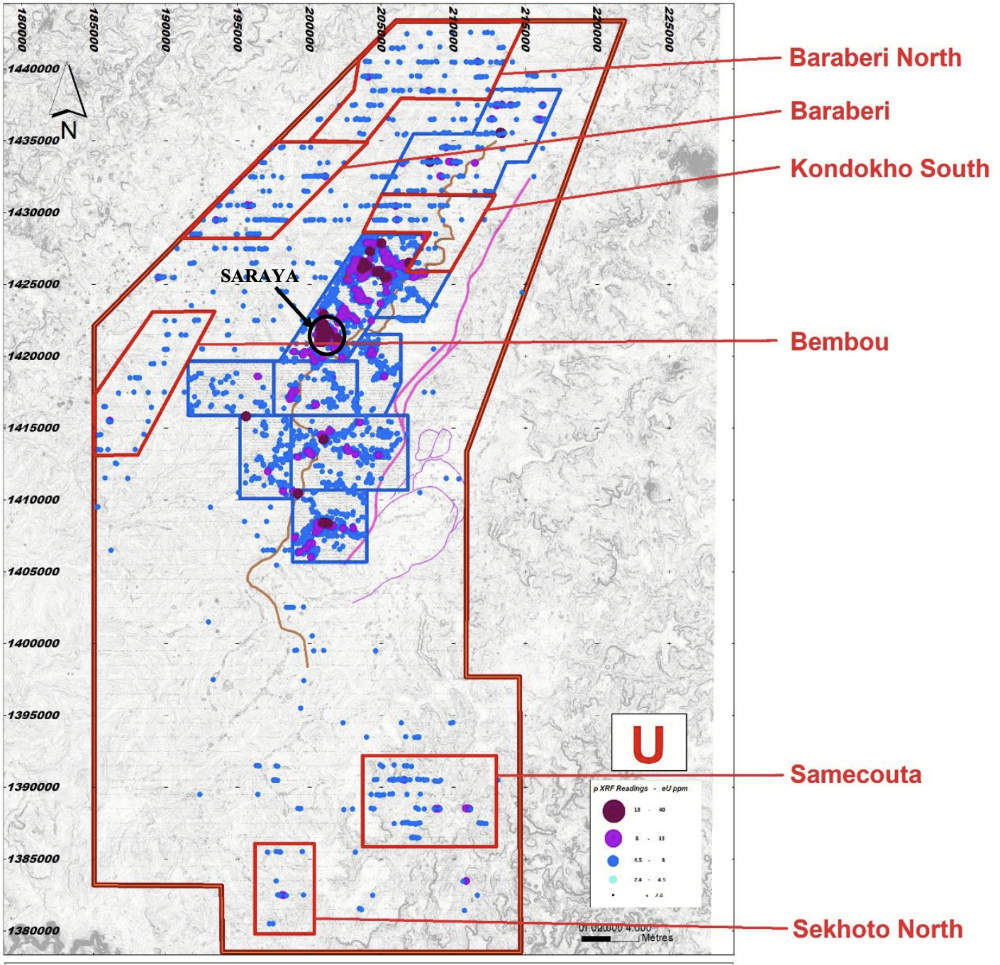Haranga wraps up regional termite mound sampling for uranium at Saraya

Regional termite mound sampling for uranium has now been completed at Haranga’s Saraya permit. Pic: Getty Images
- Haranga Resources completes regional termite mound sampling over its Saraya permit in Senegal
- Over 97% of the permit area has been covered by a broad 1,000m by 200m grid
- Termite mound sampling has proven to be a quick and cost-effective way of identifying uranium anomalies
Special Report: Haranga Resources has completed regional termite mound sampling over its entire Saraya permit in Senegal with the low-cost process identifying numerous anomalous uranium targets that are currently being followed up on.
While it can’t be used in any resource estimation, termite mound sampling has certainly proven to be a quick and cost-effective way of pointing the way for more detailed exploration.
Here’s how it works.
Termites dig deep into the earth to build their nest and most – if not all – of the evacuated material is brought to the surface to construct the massive mounds that sit above them.
For Haranga Resources (ASX:HAR), this rather conveniently delivers valuable subsurface material, allowing it to be quickly and cheaply sampled without having to go through the trouble of drilling or digging.
An initial, broad termite mound sampling grid will be followed by infill sampling in areas of interest before the company brings in auger drilling to first firm up the identified anomaly before carrying out reverse circulation drilling.

Sampling guiding exploration
The company has now completed termite mound sampling work with 15,845 samples collected out of the planned 16,344 samples.
This means that about 97% of the Saraya permit’s 1,650km2 area has been covered by sampling on a 1,000m by 100m grid.
All samples have been processed with pXRF for eU3O8 readings – and multi-element results for a set of 39 elements – to provide an indicator of whether uranium is present.
This has delivered pXRF readings of 7 to 45 parts per million eU3O8 over the anomalous areas.
These were used to define infill termite mound sampling grids of 200m by 50m, which are still outstanding.
Of these, the central anomalous uranium corridor, which includes the existing Saraya deposit, has been the focus to date – though the company has delineated another six grids to be infilled.
The Bembou, Baraberi and Baraberi North grids will be testing the western boundary of the Saraya Granite while the Kondokho South and Kondokho grids will be testing the north-northeast continuation of the 25km long Saraya structural corridor.
Meanwhile, the Samecouta and Sekhoto North grids will be testing the southern anomalies delineated by the regional termite mound sampling.
“Haranga has adopted a four-stage exploration process, with stage one and two consisting of regional termite mound sampling (TMS) and infill TMS, respectively,” managing director Peter Batten said.
“Through dogged persistence the Senegal field teams have completed Stage 1 for the entire permit spanning 1650km2.
“The regional surveys have identified an additional nine prospects from the original seven (including Saraya) that we inherited from the historic data and extended the anomalous uranium corridor to in excess of 30km, as well as highlighted numerous zones outside the corridor particularly on granitic contacts.
“The process is edging closer to the more exciting stages 3 and 4 of our exploration process, the auger drilling and RC drilling phases.
“With the drilling comes the potential for more uranium deposit discoveries within our >30km corridor of uranium anomalism, which includes 16 (including Saraya) uranium prospects identified from Stage 1 exploration.”
HAR expects to complete the final infill termite mound sampling during the next dry season in Senegal.
This article was developed in collaboration with Haranga Resources, a Stockhead advertiser at the time of publishing.
This article does not constitute financial product advice. You should consider obtaining independent advice before making any financial decisions.
Related Topics

UNLOCK INSIGHTS
Discover the untold stories of emerging ASX stocks.
Daily news and expert analysis, it's free to subscribe.
By proceeding, you confirm you understand that we handle personal information in accordance with our Privacy Policy.








